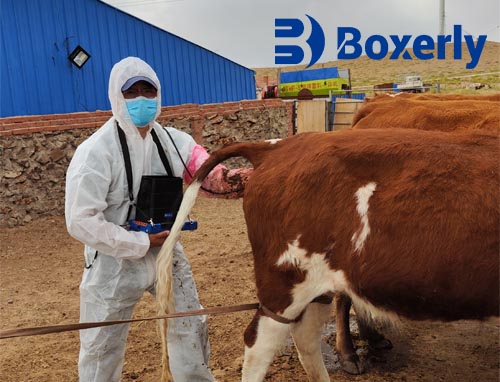The pattern of changes in signs of estrus during the day is unique, with the onset and cessation of estrus behavior occurring most frequently at night (evening to early morning). Many research results indicate that the climbing frequency is lowest during the day and highest at night. Research has shown that approximately 70% of climbing and crossing behaviors occur between 7 pm and 7 am in the evening. When using imported cattle for B-ultrasound observation, it can also be known that mature follicles are produced more in the morning.
40% of all climbing behaviors can be observed between 7:00-8:00 in the morning. The percentage of cows crawling and crossing can be monitored at noon is extremely low. About 40% of estrus behavior can be observed between 13:00 and 14:00 in the afternoon. There are fewer cases of ovarian follicle maturation observed during the day using imported cattle and B-ultrasound. The probability of detecting signs of estrus at night is extremely high. The duration of crawling behavior exhibited by cows varies, ranging from 3 to 30 hours. In order to achieve an estrus monitoring rate of over 90% in the herd, cows should be carefully observed in the early morning and evening, while during the day, they can be observed every 4 to 5 hours.

The issues related to estrus monitoring are a daunting task for many pastures. Multiple factors must be comprehensively considered to ensure successful monitoring of estrus. The reasons for not being able to monitor estrus are as follows: the cow is pregnant; After calving, the cow did not return to its normal estrus cycle, and the corpus luteum on the ovaries of imported cows still existed on ultrasound. Lack of estrus in cows due to malnutrition, infection, or complications after calving (no periodic estrus); Imported cattle were diagnosed with ovarian cyst disease using ultrasound; Quiet estrus (ovulation but no estrus behavior); The caretakers were unable to monitor estrus.








